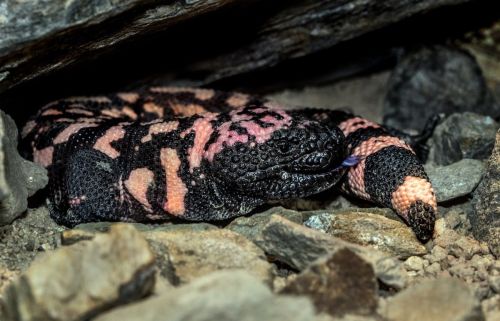They are named for their blue tongues, which contrast with their pink mouths to ward off potential predators.
The brightness and size of the tongue also allows skinks to communicate with other members of their species over long distances. They may use it as a warning, to identify relatives, to claim and protect territory, or to aid in mating.
Almost all blue-tongued skinks live in mainland Australia, with the exception of one species found in New Guinea and Indonesia.
Central blue-tongued lizards are brown to gray with stripes, some, like the Western blue-tongued lizards, are pale with brown stripes, while others, like the Adelaide pygmy blue-tongued lizards, are rusty to gray with no stripes at all.
Color may also depend on habitat type - better camouflaged lizards tend to live and thrive longer.
They weigh about 1 kg (2,2 lb.).Their body is stocky, cylindrical, with a triangular head wider than the rest of the body.
Among skinks, many blue-tongued lizards are among the largest species. Despite their relatively long bodies, their legs are short, which causes them to move slowly.
One of the longest blue-tongued lizards are Indonesian blue-tongued skink and the Irian Jaya blue tongue skink.
They inhabit oceanic coastlines, mountainous regions, and lowlands. In urbanized areas, they may be harmed by humans or become prey for dogs and cats.
They usually eat insects, smaller reptiles and snails, but fruits, berries and flowers also have a place in their diet. Some species may occasionally feed on carrion. Because of their short legs, they tend to wait and lurk for prey rather than actively hunt.
Large birds like kookaburras and falcons, snakes, dingoes, foxes, feral dogs and cats are most common enemies of blue-tongued lizards.












